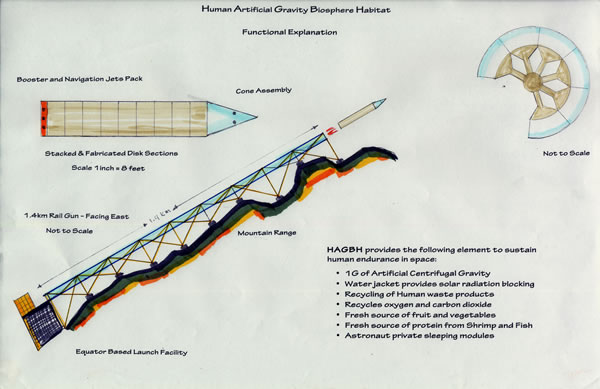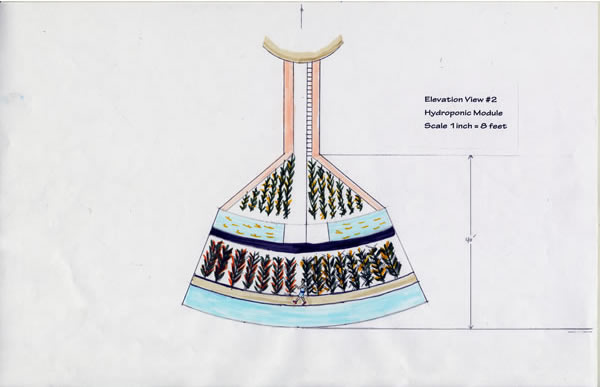Having grown up in the late 50’s and early 60’s, I was born watching the space program from its inception. I watched John Glenn’s first launch, saw the moon landing live, I had every model of every NASA space ship Revel ever made!Like a lot of my generation, I’m disappointed: where my flying car? Where’s the robot that cooks! Where’s my Jet pack!
As a kid with imagination, real life events and a heavy dose of Science Fiction films, I truly had my head in the clouds for most of my young life.I chose to rethink the existing International Space Station (ISS) at this time because it is flawed in many areas and the technology to correct these flaws has not existed, until now.
Patent - The Caldera Lamination System:
"Means to autoclave composite assemblies in a vacuum"
You will see in the attached drawing that the ISS is made up of dozens of module’s that have been put together piece meal as part of an international collaboration.
Every part of the ISS has been launched into space at the estimated cost of $10,000 per pound, using chemical rockets.
Parts not delivered by chemical rockets directly have had to fit in the payload bay of the now retired Space Shuttle, at an estimated cost of $50,000 a pound.

We have a bunch of problems:
- We have no more Shuttles to deliver component’s
- Our International collaboration is failing, we are dependent on Russia for all frequent crew manning’s, at $70,000,000 a launch
- Astronauts’ space-time is limited due to bone degeneration from lack of gravity and solar radiation. Peak conditions, an astronaut can only last 6 months.
- Limited food and oxygen require frequent launches of supply ships, to date only one American company has made any dockings, SpaceX, and they will not carry Astronauts for another 3 years.
The Human Artificial Gravity Biosphere Habitat

The HAGBH provides the following element to sustain human endurance in space:
- 1G of Artificial Centrifugal Gravity
- Water jacket provides solar radiation blocking
- Recycling of Human waste products
- Recycles oxygen and carbon dioxide
- Fresh source of fruit and vegetables
- Fresh source of protein from Shrimp and Fish
- Astronaut private sleeping modules
Step 1:
Deliver payload into space at less than $50 a pound
- Build 1.4km Rail Gun in Ecuador, at a 35 Degree angle, facing East
- Power with Solar cells and Lithium batter storage
Step 2:
Fabricate modular components from Kevlar and ‘Caldera” laminate.
- Fabricate complex interlocking component’s
- Compress via ‘origami like’ process
- Seal as a modular payload component, multiple modules
- Dock payload to ISS for assembly.
- Inflate using carbon Dioxide gases to 1 atmosphere
- Apply electrical pulse to bond.
- Repeat with next payload component.
Step 3:
Human Habitat
- Rotate structure at 1 RMP to provide 1G of gravity at hub radius
- Add water from rail gun payloads
- Add fish and plants, fruits and vegetables.
- Resupply water via Rail Gun as needed
Finished station extends Astronaut’s stay in space. Providing gravity, fresh oxygen, fruit, vegetables and proteins. Increase the amount of visitors to the ISS. Perhaps we can put Artists, Poets and writers in space?!

Elevation View

Section View

Elevation View 2
Fully Function 3D model coming soon!





